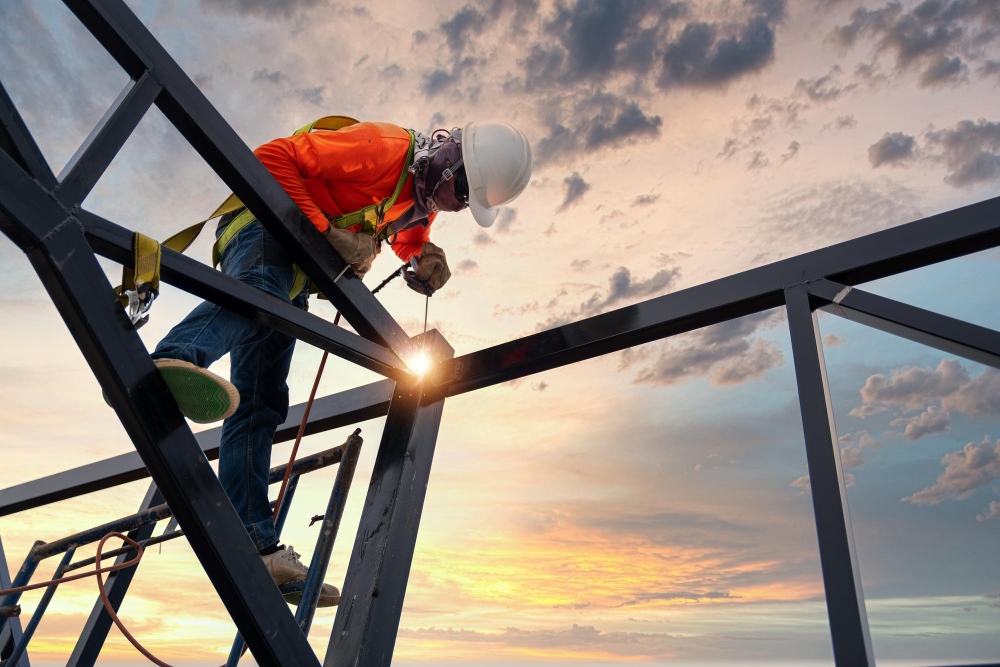Cutting-edge Patterns in Steel Construction: Enhancing Toughness and Precision
In the realm of steel fabrication, the quest of longevity and accuracy has led to a wave of innovative patterns that are reshaping the market. These patterns are not simply forming the existing yet additionally laying the groundwork for the future of steel fabrication, assuring more improvements in durability and precision.
Advanced Welding Technologies
In the realm of steel construction, the adoption of advanced welding innovations has actually substantially changed the sector's strategy to attaining premium top quality and accuracy in architectural welds. Advanced welding innovations, such as laser beam of light welding and friction stir welding, have emerged as game-changers in the area. Laser light beam welding uses a concentrated laser beam of light to join metal parts with impressive precision and speed, making it optimal for elaborate styles and thin products. On the various other hand, friction stir welding develops unbelievably solid bonds by mechanically intermixing the molecules of the products at the joint, eliminating the need for melting the steel. These technologies provide various benefits, including minimized heat-affected zones, minimal distortion, and boosted mechanical properties in the bonded joints. By leveraging these sophisticated welding techniques, steel makers can raise the sturdiness, strength, and accuracy of their structural welds, fulfilling the progressively demanding needs of contemporary building and construction jobs.
Robotic Automation in Manufacture
Embracing robotic automation has actually come to be a cornerstone of contemporary steel manufacture practices, streamlining processes and boosting effectiveness throughout the sector. Robots are transforming the method steel parts are manufactured, offering unmatched precision and speed while decreasing human error. These automated systems can manage recurring jobs with regular precision, leading to higher high quality end products.
One key advantage of robot automation in steel manufacture is the ability to function around the clock without fatigue, considerably boosting manufacturing result. This continual operation lessens downtime and increases task timelines, inevitably conserving prices for suppliers. In addition, robotics can be set to execute detailed jobs that might be difficult or dangerous for human workers, enhancing security in the work environment.
Moreover, robotic automation makes it possible for seamless combination with various other digital innovations, such as computer-aided layout (CAD) software application and Net of Points (IoT) systems (steel fabrication melbourne). This interconnected approach enhances communication in between different phases of manufacture, optimizing process and making sure real-time surveillance and control. As the steel fabrication market remains to advance, robot automation stands apart as a transformative force driving effectiveness and accuracy in making procedures

High-Strength Alloy Development
The development of high-strength alloy advancement in steel construction is reshaping the market's technique to improving product toughness and efficiency. High-strength alloys are crafted to display remarkable mechanical buildings, such as raised tensile toughness, toughness, and deterioration resistance contrasted to typical steel qualities. By including these advanced alloys right into fabrication procedures, manufacturers can produce components that withstand greater stress and anxiety degrees and extreme atmospheres, resulting in more reliable and sturdy final product.
One secret benefit of high-strength alloy growth is the capacity to decrease material density without jeopardizing structural honesty. This informative post not only results in lighter-weight parts however also adds to set you back savings and boosted effectiveness in fabrication and setting up processes. The improved strength-to-weight proportion of these alloys enables for the design and building of structures with greater load-bearing abilities while lessening overall weight.
3D Modeling and Simulation Software Application
Developments in steel construction procedures have actually been dramatically propelled by the integration of innovative 3D modeling and simulation software application devices. These devices enable makers to develop thorough digital versions of their tasks, allowing them to envision the last item with accuracy before any type of physical work begins.

Lasting Practices in Steel Manufacturing
Integrating sustainable techniques into steel manufacturing processes is essential for lessening environmental effect and guaranteeing lasting resource availability. One crucial sustainable method is the fostering of energy-efficient innovations to reduce greenhouse gas exhausts during the steel production procedure. This includes making use of renewable energy sources, such as solar or wind power, to power steel plants and carrying out energy-efficient equipment to enhance power usage.
One more critical aspect of lasting steel manufacturing is the responsible sourcing of basic materials. This entails guaranteeing that the iron ore and various other sources utilized in steelmaking are acquired from eco friendly and ethical resources. By advertising openness in the supply chain and adhering to strict environmental criteria, steel manufacturers can reduce the unfavorable influences of source removal on regional ecological communities and communities.

Conclusion
In conclusion, the innovative fads in steel manufacture such as sophisticated welding innovations, robotic automation, high-strength alloy development, 3D modeling and simulation software program, and lasting methods are enhancing the durability and accuracy of steel items. These developments are transforming the steel fabrication sector by enhancing efficiency, top quality, and sustainability. It is clear that the future of steel manufacture lies in embracing these cutting-edge modern technologies to satisfy the needs of contemporary construction and production industries.
In the realm of steel fabrication, the quest of resilience and accuracy has led to a wave of cutting-edge trends that are improving the market.In the realm of steel fabrication, the adoption of sophisticated welding innovations has actually considerably changed the industry's technique to achieving remarkable quality and precision in architectural welds. As the steel fabrication market proceeds to evolve, robotic automation stands out as a transformative pressure driving performance and precision in producing procedures.
Furthermore, recycling original site and recycling steel scrap and waste materials play a substantial role in enhancing the sustainability of steel manufacturing. steel fabrication melbourne.In verdict, dig this the innovative trends in steel construction such as innovative welding modern technologies, robotic automation, high-strength alloy development, 3D modeling and simulation software application, and sustainable practices are improving the durability and precision of steel products